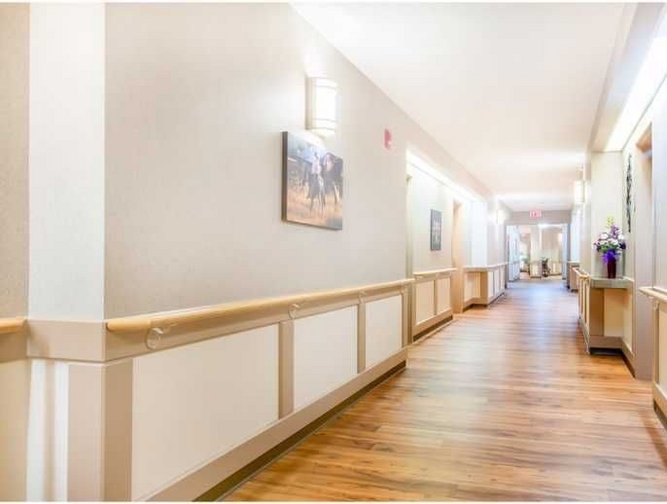“It’s a mission driven organisation to extend Christian hospitality to those in need across the continuum of care, independent of your religious following or race,” says Shawn Terlson, President and CEO of The Good Samaritan Society (GSS).
As a leading not-for-profit registered charity in Western Canada, the GSS has been striving to provide quality accommodations, health and community care services and programs to aging individuals for over 67 years.
Terlson has over 20 years in healthcare behind him and sits in the perfect position to drive forward the strategic development of the charity, starting with a major structural construction program that will allow the charity to better serve its residents.
A time to care
In a time where the country is facing the largest population of 75 and 85+ in history, replacing and refurbishing care homes with state of the art accommodation is needed now more than ever.
“I’m working with my strategic leadership team and trying to point the ship in the right direction with regards to what’s happening environmentally with that aging population,” Terlson says.
“Some of our facilities are over 50 years old and in need of replacement, so how do we go about achieving this, updating those facilities and at the same time pay close attention to the changing demographic?”
That is the challenge before Terlson and the GSS. Over the last six months, Terlson and his team have identified key areas in need of redevelopment. One such development, a 236-bed facility built over 50 years ago. The building was structured and modelled as an institutional complex that is not like the home-like environments by today’s standards of more modern care homes. Coupled with the fact that this facility had two seniors to a room in many cases, Terslon recognised that this was not best practice of today’s standards.
Make no mistake, this major overhauling is no afterthought or lack of foresight. Terslon spends six weeks of his year visiting the various care homes, meeting employees and residents and familiarising himself with the day to day operations.
“This posed the question, do we throw good money at the bad or should with work with our partners, Alberta Health Services, and recognise that we need to replace these facilities for the benefit of our seniors?” he says.
Complex construction
Terlson and the GSS have secured 12 acres where the Good Samaritan Village will be built, a 432 bed-home like no other.
The village will comprise of 12 units or homes, with 4 homes per floor that create a neighbourhood and a tower complex made up of four floors. This structure residential in appearance, and each floor and separate unit, will be a “home-like environment, not simply an architectural monument”.
“The unique thing about what we are trying to do is the building of an environment where seniors and residents will have everything they need in one structure,” he adds.
With the whole of the bottom floor dedicated to a mall comprising of restaurants, shops, a day spa, retail pharmacy, a day-care for staff and a senior’s clinic, the finished structure will be quite the achievement.
Smart investment
As a not-for-profit charity, the question on everyone’s lips will be centred around investment, how much is this going to cost and where will that investment come from.
The answer rests in the close partnership with Alberta Health services in which GSS will transfer operating agreements that will generate income to the new seniors environment. This will require the sale of existing land to offset what GSS’ capital contribution would be. Terlson admits the cost of construction alone is upwards of around $90 million.
But one thing is clear, the end goal is the better servicing of the residents.
“There are a lot of moving pieces. We want to use our equity from the sale of our existing lands back into the property to make it more cost effective for Alberta Health Services so we can provide better care for their seniors,” says Terlson.
Building blocks
With a potential construction date of spring 2018 and aiming at a fall 2021 completion ready for occupancy in September that same year, there have been and will continue to be a number of significant challenges that Terslon and the GSS must overcome to get there.
The major challenge for Terlson to date was the location and acquisition of that 12-acre parcel of land integrated into a neighbourhood and not on the outskirts. This was key in the process of establishing the home-like environment of the complex.
Despite the project being in its infancy, Terlson can call upon key successes along the way that will enable GSS to approach the future construction with the focus and enthusiasm needed for a project as unique as this one.
The planning and design of the facility is an achievement in itself.
“Big facilities can be institutional, but this is so far removed from that,” he says.
In breaking the facility up into 12 bed homes, this allows for it to be staffed to tailor for a 12-bed resident population which in turn presents more time for those dedicated staff to provide better care and service to the senior residents in their homes.
“We’ve really looked at it from a staffing perspective and a resident usability perspective, and how we can make this a fantastic environment for many years to come,” Terlson adds.
Powered by partners
Terlson can feel assured in the strategic partnerships that GSS has established in order to create, construct and run a facility like the Good Samaritan Village. GSS works with PharmaCare to centralise the pharmaceutical needs directly into the complex, while also working with Chandos as a construction partner that Terlson feels is key in enabling the charity to fully realise this incredible vision.
“It’s about looking at vertical integration and how we can decrease our costs and increase our ability to invest in other services, in care. We can only achieve this through our strategic partners,” he says.
A crucial element in care residency is the ability to monitor not only the health of the residents but the location. Through a close partnership with building systems solutions provider Honeywell, GSS is investing in numerous smart building technologies.
This includes integrating technology solutions that can auto update patient charts though smart sensors in places throughout the building that can take the readings of resident based on their RIF tag information and auto fill that information into an electronic chart.
Again, these investments have one aim. “It’s all about allowing the healthcare professional more time to spend being by the side of the individual, taking away laborious paper tasks and creating more efficient care,” explains Terlson.
The needs of the many
Despite the undertaking of such a huge construction project, there is a challenge in finding the right balance between satisfying the needs of the construction with the needs of the senior residents.
For Terlson and the GSS team it seems that balance has been the centre of every decision moving forward.
“We’ve really looked at every aspect of our organisation and building with a magnifying glass to ensure we come in on time and on budget and create a building that’s efficient and effective, and will continue to be that way for the next 20 years,” he says.
“At GSS we have to do the business of seniors’ care in a much smarter way going forward so we can maximise the use of our people resources to benefit our seniors.”



